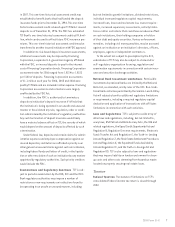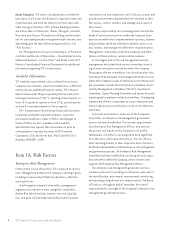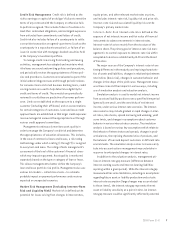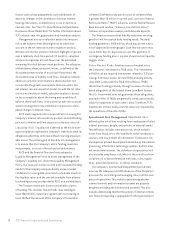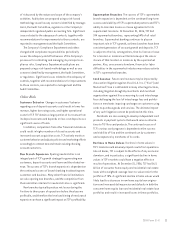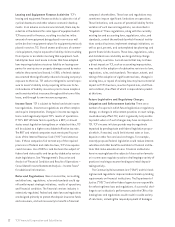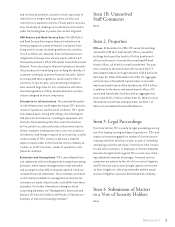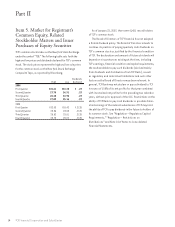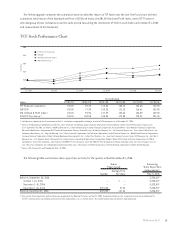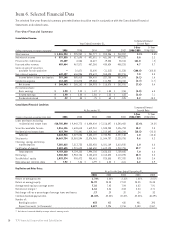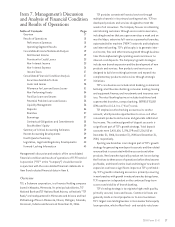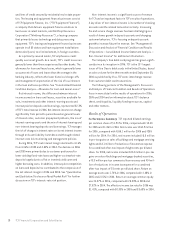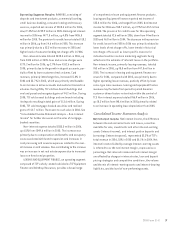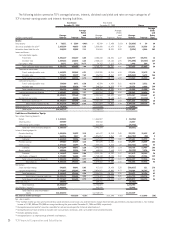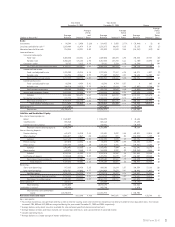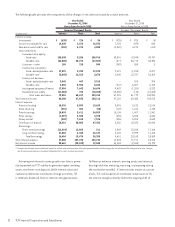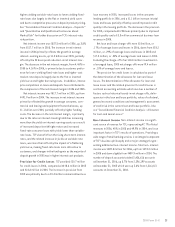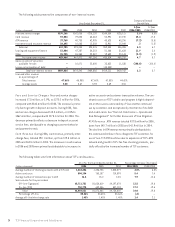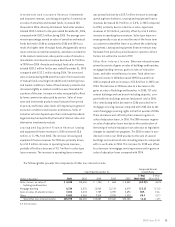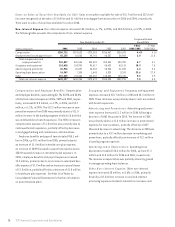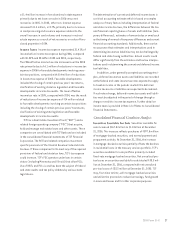TCF Bank 2006 Annual Report Download - page 37
Download and view the complete annual report
Please find page 37 of the 2006 TCF Bank annual report below. You can navigate through the pages in the report by either clicking on the pages listed below, or by using the keyword search tool below to find specific information within the annual report.
2006 Form10-K
Item 7. Management’s Discussion
and Analysis of Financial Condition
and Results of Operations
Table of Contents Page
Overview 17
Results of Operations 18
Performance Summary 18
Operating Segment Results 19
Consolidated Income Statement Analysis 19
Net Interest Income 19
Provision for Credit Losses 23
Non-Interest Income 23
Non-Interest Expense 26
Income Taxes 27
Consolidated Financial Condition Analysis 27
Securities Available for Sale 27
Loans and Leases 28
Allowance for Loan and Lease Losses 31
Non-Performing Assets 34
Past Due Loans and Leases 35
Potential Problem Loans and Leases 35
Liquidity Management 36
Deposits 36
Branches 37
Borrowings 37
Contractual Obligations and Commitments 38
Stockholders’ Equity 39
Summary of Critical Accounting Estimates 39
Recent Accounting Developments 39
Fourth Quarter Summary 39
Legislative, Legal and Regulatory Developments 40
Forward-Looking Information 40
Management’s discussion and analysis of the consolidated
financial condition and results of operations of TCF Financial
Corporation (“TCF” or the “Company”) should be read in
conjunction with the consolidated financial statements in
Item 8 and selected financial data in Item 6.
Overview
TCF, a Delaware corporation, is a financial holding company
based in Wayzata, Minnesota. Its principal subsidiaries, TCF
National Bank and TCF National Bank Arizona, collectively “TCF
Bank,” are headquartered in Minnesota and Arizona and had
453 banking offices in Minnesota, Illinois, Michigan, Colorado,
Wisconsin, Indiana and Arizona at December 31, 2006.
TCF provides convenient financial services through
multiple channels in its primary banking markets. TCF has
developed products and services designed to meet the
needs of all consumers. The Company focuses on attracting
and retaining customers through service and convenience,
including branches that are open seven days a week and on
most holidays, extensive full-service supermarket branches,
automated teller machine (“ATM”) networks and telephone
and internet banking. TCF’s philosophy is to generate inter-
est income, fees and other revenue growth through business
lines that emphasize higher yielding assets and low or no
interest-cost deposits. The Company’s growth strategies
include new branch expansion and the development of new
products and services. New products and services are
designed to build on existing businesses and expand into
complementary products and services through strategic
initiatives.
TCF’s core businesses include retail banking; commercial
banking; small business banking; consumer lending; leasing
and equipment finance; and investments and insurance serv-
ices. The retail banking business includes traditional and
supermarket branches, campus banking, EXPRESS TELLER
ATMs and Visa U.S.A. Inc. (“Visa”) cards.
TCF emphasizes the checking account as its anchor
account, which provides opportunities to cross-sell other
convenient products and services and generate additional
fee income. The continued growth of deposit accounts is
a significant part of TCF’s growth strategy. Total deposit
accounts were 2,426,616, 2,296,199 and 2,216,013 at
December 31, 2006, December 31, 2005 and December 31,
2004, respectively.
Opening new branches is an integral part of TCF’s growth
strategy for generating new deposit accounts and the related
revenue that is associated with the accounts and other
products. New branches typically produce net losses during
the first two to three years of operations before they become
profitable, and therefore the level and timing of new branch
expansion can have a significant impact on TCF’s profitabil-
ity. TCF’s growth in checking accounts is primarily occurring
in new branches with growth in mature branches being slower.
TCF’s expansion is dependent on the continued long-term
success and viability of branch banking.
TCF’s lending strategy is to originate high credit quality,
primarily secured, loans and leases. Commercial loans are
generally made on local properties or to local customers.
TCF’s largest core lending business is its consumer home equity
loan operation, which offers fixed- and variable-rate loans
17


